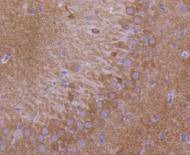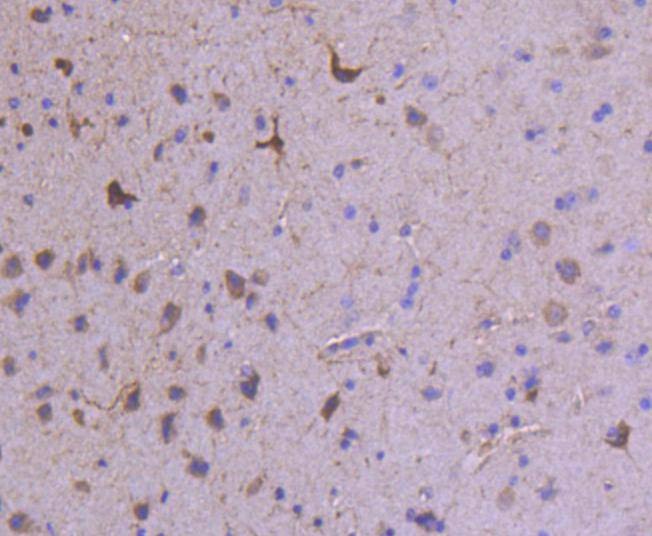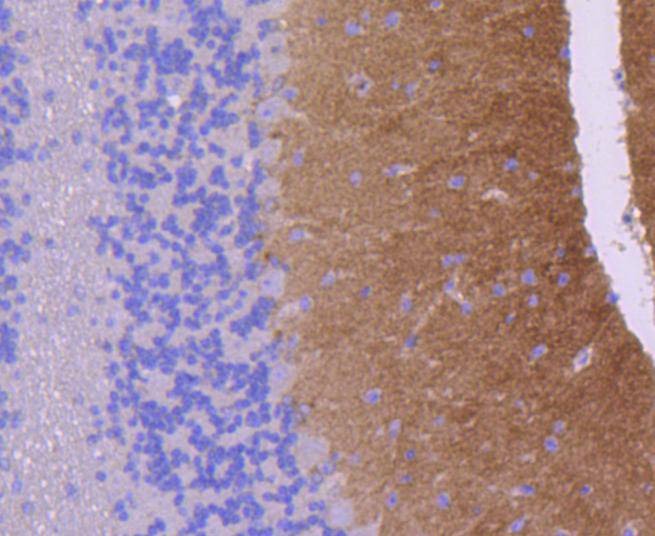Shopping Cart
Remove All Your shopping cart is currently empty
Your shopping cart is currently empty
Anti-Glutamate receptor 1 Antibody (3G336) is a Rabbit antibody targeting Glutamate receptor 1. Anti-Glutamate receptor 1 Antibody (3G336) can be used in IHC,IP,WB.
| Pack Size | Price | USA Warehouse | Global Warehouse | Quantity |
|---|---|---|---|---|
| 50 μL | $298 | 7-10 days | 7-10 days | |
| 100 μL | $498 | 7-10 days | 7-10 days |
| Description | Anti-Glutamate receptor 1 Antibody (3G336) is a Rabbit antibody targeting Glutamate receptor 1. Anti-Glutamate receptor 1 Antibody (3G336) can be used in IHC,IP,WB. |
| Synonyms | OTTHUMP00000224243, OTTHUMP00000224242, OTTHUMP00000224241, OTTHUMP00000165781, OTTHUMP00000160643, MGC133252, HBGR1, GRIA1, Gria 1, Glutamate receptor, ionotropic, AMPA 1, Glutamate receptor ionotropic AMPA 1, Glutamate receptor ionotropic, Glutamate receptor 1, GluR-K1, GluRK1, GluR-A, GLURA, GLUR1, GluR K1, GLUR A, GLUR 1, GLUH1, GLUH 1, AMPA selective glutamate receptor 1, AMPA 1 |
| Ig Type | IgG |
| Clone | 3G336 |
| Reactivity | Human,Mouse,Rat |
| Verified Activity | 1. Western blot analysis of GluR1 on rat brain lysates using anti-GluR1 antibody at 1/1,000 dilution. 2. Immunohistochemical analysis of paraffin-embedded rat brain tissue using anti-GluR1 antibody. Counter stained with hematoxylin. 3. Immunohistochemical analysis of paraffin-embedded rat cerebellum tissue using anti-GluR1 antibody. Counter stained with hematoxylin. 4. Immunohistochemical analysis of paraffin-embedded mouse brain tissue using anti-GluR1 antibody. Counter stained with hematoxylin. 5. Immunohistochemical analysis of paraffin-embedded mouse cerebellum tissue using anti-GluR1 antibody. Counter stained with hematoxylin.      |
| Application | |
| Recommended Dose | WB: 1:1000-2000; IHC: 1:50-200 |
| Antibody Type | Monoclonal |
| Host Species | Rabbit |
| Construction | Recombinant Antibody |
| Purification | ProA affinity purified |
| Appearance | Liquid |
| Formulation | 1*TBS (pH7.4), 1%BSA, 40%Glycerol. Preservative: 0.05% Sodium Azide. |
| Research Background | Glutamate receptors mediate most excitatory neurotransmission in the brain and play an important role in neural plasticity, neural development and neurodegeneration. Ionotropic glutamate receptors are categorized into NMDA receptors and kainate/AMPA receptors, both of which contain glutamate-gated, cation-specific ion channels. Kainate/AMPA receptors are co-localized with NMDA receptors in many synapses and consist of seven structurally related subunits designated GluR-1 to -7. The kainate/AMPA receptors are primarily responsible for the fast excitatory neuro-transmission by glutamate whereas the NMDA receptors are functionally characterized by a slow kinetic and a high permeability for Ca2+ ions. The NMDA receptors consist of five subunits: epsilion 1, 2, 3, 4 and one zeta subunit. The zeta subunit is expressed throughout the brainstem whereas the four epsilon subunits display limited distribution. |
| Conjucates | Unconjugated |
| Immunogen | Recombinant Protein |
| Uniprot ID |
| Molecular Weight | Theoretical: 92 kDa. |
| Stability & Storage | Store at -20°C or -80°C for 12 months. Avoid repeated freeze-thaw cycles. |
| Transport | Shipping with blue ice. |
| Size | Quantity | Unit Price | Amount | Operation |
|---|

Copyright © 2015-2026 TargetMol Chemicals Inc. All Rights Reserved.